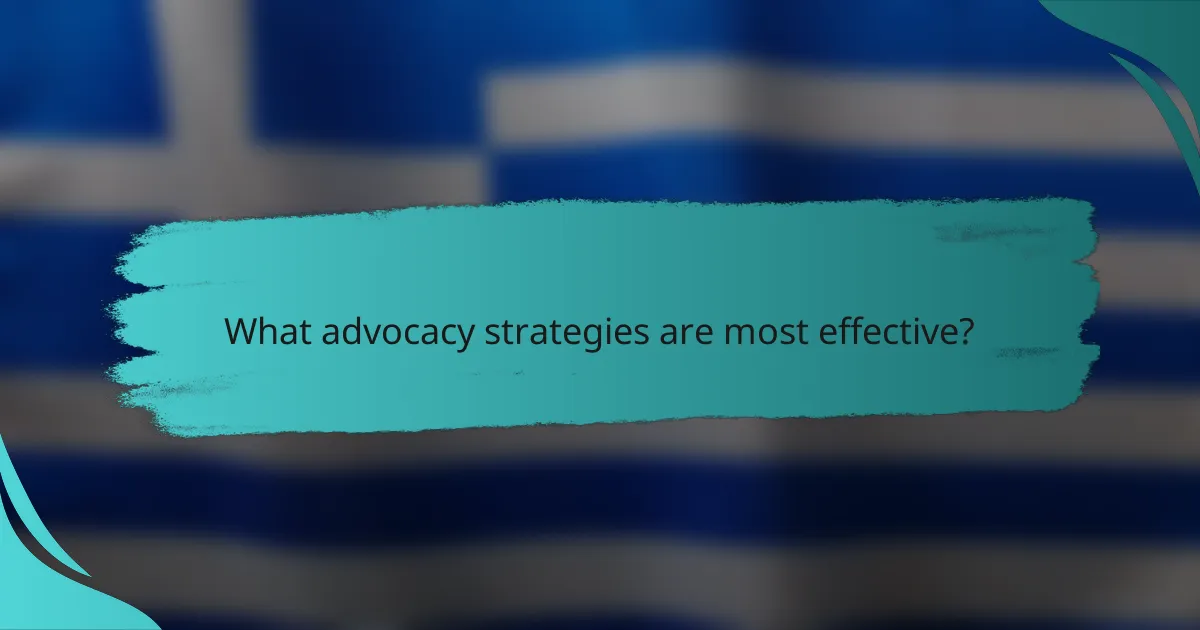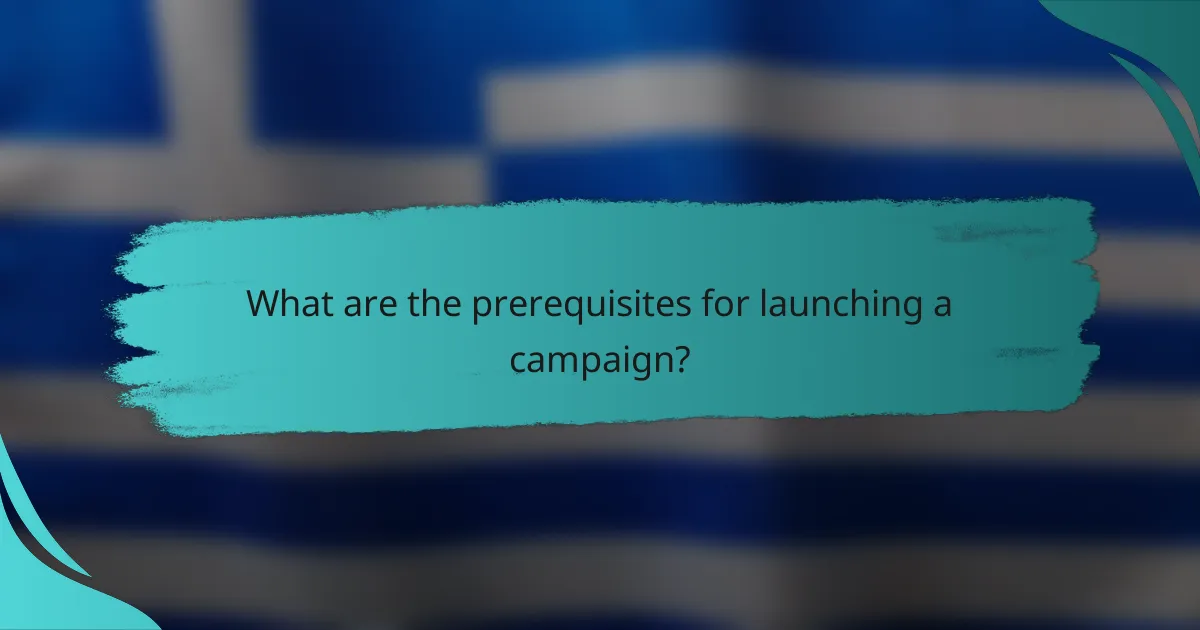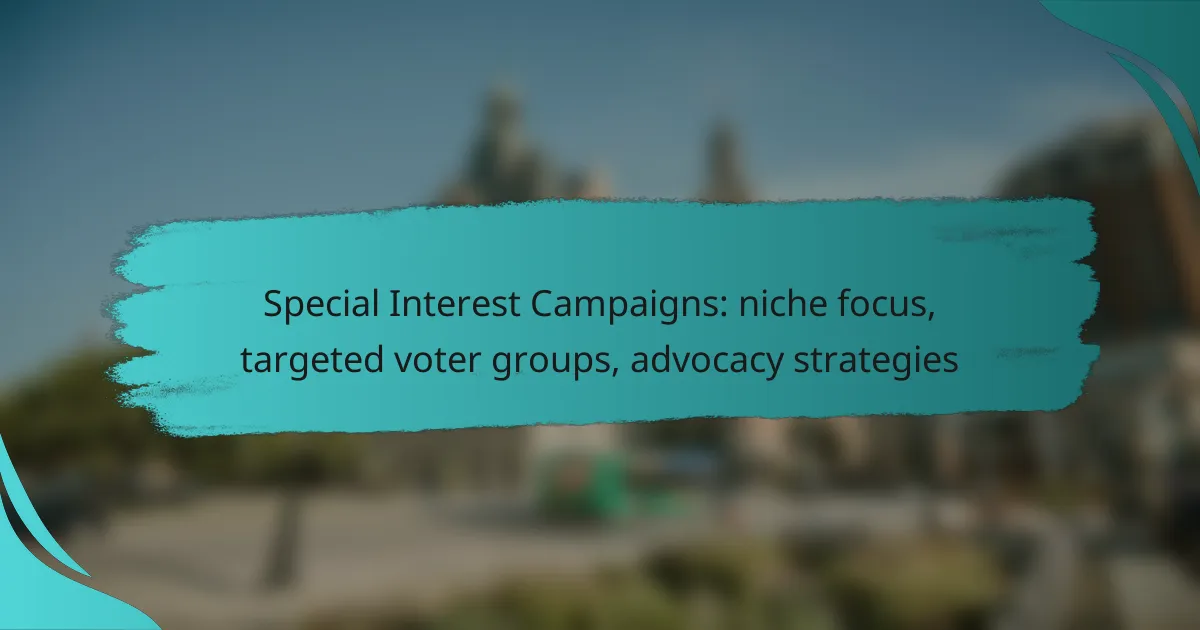Special interest campaigns thrive on a deep understanding of targeted voter groups, allowing advocates to tailor messages that resonate with specific demographics. By leveraging data-driven insights and focused strategies, these campaigns can effectively mobilize support and drive meaningful change. Engaging communities through grassroots efforts and strategic partnerships enhances the impact of advocacy initiatives, ensuring that the voices of diverse populations are heard and represented.

How to design effective special interest campaigns in the UK?
Designing effective special interest campaigns in the UK involves understanding your target audience and crafting messages that resonate with their specific needs and values. Focused strategies, data-driven insights, and community engagement are essential for mobilizing support and achieving advocacy goals.
Targeted messaging strategies
Targeted messaging strategies are crucial for connecting with specific voter groups. Tailor your messages to address the unique concerns and interests of these groups, using language and examples that resonate with their experiences.
Consider segmenting your audience based on demographics, interests, or voting behavior. For instance, a campaign focused on environmental issues might emphasize local pollution impacts to appeal to urban voters while highlighting rural conservation efforts for those in the countryside.
Utilizing data analytics
Data analytics can enhance your campaign by providing insights into voter behavior and preferences. Use tools to analyze demographic data, social media interactions, and past voting patterns to identify key segments and tailor your outreach accordingly.
Implementing A/B testing on your messaging can help determine which approaches resonate best with your audience. Regularly review analytics to adapt your strategies in real-time, ensuring you remain relevant and effective.
Engaging local communities
Engaging local communities is essential for building trust and support. Attend community events, hold town hall meetings, and collaborate with local organizations to foster relationships and gather feedback on your campaign’s focus.
Consider forming local advisory boards that include community leaders and representatives from targeted groups. This approach not only enhances credibility but also ensures that your campaign addresses the specific needs of the community.
Leveraging social media platforms
Social media platforms are powerful tools for reaching and mobilizing targeted voter groups. Use platforms like Facebook, Twitter, and Instagram to share tailored content that speaks directly to your audience’s interests and concerns.
Engage with followers through interactive content such as polls, Q&A sessions, and live streams. This not only increases visibility but also fosters a sense of community and encourages active participation in your campaign.
Collaborating with advocacy groups
Collaborating with established advocacy groups can amplify your campaign’s reach and credibility. Identify organizations that align with your campaign’s goals and values, and explore partnership opportunities for joint initiatives or events.
Leverage the networks of these groups to access broader audiences and resources. This collaboration can also provide valuable insights and support in navigating regulatory environments and public sentiment.

What voter groups should be targeted?
Targeting specific voter groups can significantly enhance the effectiveness of special interest campaigns. Focusing on demographics such as young voters, minority communities, environmental advocates, and healthcare-focused populations allows for tailored messaging and advocacy strategies that resonate deeply with each group.
Young voters in urban areas
Young voters in urban areas are often more engaged in social issues and progressive policies. Campaigns should emphasize topics like education, job opportunities, and affordable housing, as these resonate strongly with this demographic.
Utilizing social media platforms for outreach is crucial, as young voters frequently engage with content on these channels. Consider hosting events or discussions that allow for direct interaction, fostering a sense of community and involvement.
Minority communities
Minority communities represent diverse interests and concerns that require careful consideration in campaign strategies. Issues such as racial equality, economic opportunities, and access to education are often at the forefront of their priorities.
Building relationships with community leaders and organizations can enhance trust and credibility. Tailoring messages to reflect cultural values and addressing specific challenges faced by these communities can lead to more effective advocacy.
Environmental advocates
Environmental advocates are passionate about sustainability and climate change. Campaigns should focus on policies that promote renewable energy, conservation efforts, and environmental justice.
Engaging this group through educational initiatives and grassroots movements can amplify their voices. Highlighting local environmental issues and solutions can also create a stronger connection and motivate action.
Healthcare-focused demographics
Healthcare-focused demographics prioritize access to affordable healthcare and quality medical services. Campaigns should address issues like healthcare reform, mental health support, and prescription drug affordability.
Utilizing personal stories and testimonials can effectively convey the impact of healthcare policies. Collaborating with healthcare professionals and organizations can also lend credibility and enhance outreach efforts.

What advocacy strategies are most effective?
Effective advocacy strategies focus on engaging specific voter groups through targeted actions that resonate with their interests. Key methods include grassroots mobilization, online petitions, community outreach events, and partnerships with influencers.
Grassroots mobilization
Grassroots mobilization involves rallying community members to advocate for a cause, often through local organizations or networks. This strategy is effective because it leverages personal connections and shared experiences to inspire action.
To implement grassroots mobilization, start by identifying key community leaders and influencers who can help spread your message. Organizing events such as rallies or town hall meetings can also create a sense of urgency and community involvement.
Online petition campaigns
Online petition campaigns are a powerful tool for gathering support and demonstrating public interest in specific issues. They allow advocates to reach a wide audience quickly and can be shared across social media platforms for greater visibility.
When creating an online petition, ensure that it clearly states the issue, the desired outcome, and why it matters. Platforms like Change.org or Care2 can help facilitate these campaigns, but be mindful of promoting the petition through targeted social media ads to maximize reach.
Community outreach events
Community outreach events are essential for building relationships and fostering dialogue between advocates and the public. These events can include workshops, informational sessions, or social gatherings that encourage participation and engagement.
To maximize impact, tailor events to the interests and needs of the target audience. For instance, hosting a family-friendly event may attract more participants and create a welcoming atmosphere for discussion.
Influencer partnerships
Influencer partnerships involve collaborating with individuals who have a significant following and can sway public opinion. These partnerships can amplify messages and reach demographics that may be harder to engage through traditional methods.
When selecting influencers, consider their alignment with your cause and their audience demographics. A well-crafted campaign that includes authentic endorsements can significantly enhance credibility and engagement with targeted voter groups.

What are the prerequisites for launching a campaign?
Launching a campaign requires a clear understanding of local regulations, a dedicated campaign team, and well-defined goals. These prerequisites ensure that the campaign is legally compliant, effectively organized, and strategically focused on achieving its objectives.
Understanding local regulations
Familiarizing yourself with local regulations is crucial before launching a campaign. This includes knowing the laws regarding campaign financing, advertising, and voter outreach. Each region may have specific requirements, such as registration deadlines or contribution limits, which can vary significantly.
For example, in the United States, federal and state laws dictate how much money can be raised and spent, while in the European Union, there are directives on transparency and funding sources. Ignoring these regulations can lead to penalties or disqualification.
Building a campaign team
A strong campaign team is essential for executing a successful campaign. This team should include individuals with diverse skills, such as fundraising, communications, and grassroots organizing. Consider recruiting volunteers who are passionate about the cause and can bring valuable connections.
When assembling your team, ensure that roles and responsibilities are clearly defined. This clarity helps streamline operations and fosters accountability. Regular meetings can also keep everyone aligned with the campaign’s goals and progress.
Defining campaign goals
Clearly defined campaign goals provide direction and focus. These goals should be specific, measurable, achievable, relevant, and time-bound (SMART). For instance, a goal could be to increase voter registration by a certain percentage within a specific timeframe.
Additionally, consider segmenting your goals into short-term and long-term objectives. Short-term goals might include raising awareness through local events, while long-term goals could focus on policy changes or legislative advocacy. This structured approach helps track progress and adjust strategies as needed.

How to measure the success of special interest campaigns?
Measuring the success of special interest campaigns involves evaluating specific metrics that reflect the campaign’s goals and impact. Key indicators often include voter engagement, policy changes, and the influence on public opinion.
Key performance indicators (KPIs)
Key performance indicators (KPIs) are essential for assessing the effectiveness of special interest campaigns. Common KPIs include the number of supporters mobilized, social media engagement rates, and changes in polling data related to the campaign’s focus. Tracking these metrics helps determine whether the campaign is resonating with its target audience.
Surveys and feedback
Conducting surveys and gathering feedback from constituents can provide valuable insights into the campaign’s impact. Surveys can assess public awareness, sentiment towards specific issues, and the perceived effectiveness of advocacy efforts. Regularly collecting and analyzing this data allows for adjustments to strategies as needed.
Legislative outcomes
One of the most tangible measures of success for special interest campaigns is the achievement of legislative outcomes. This includes tracking the introduction of bills, amendments, or regulations that align with the campaign’s objectives. Monitoring these developments can indicate the campaign’s influence on policymakers and the legislative process.
Media coverage
Media coverage serves as a barometer for the visibility and relevance of a special interest campaign. Analyzing the quantity and quality of media mentions can reveal how effectively the campaign is communicating its message. Positive coverage in reputable outlets can enhance credibility and broaden outreach.
Long-term engagement
Success is not only measured in immediate results but also in long-term engagement with the target audience. Building a sustained relationship with supporters through newsletters, events, and ongoing communication can foster loyalty and increase the campaign’s influence over time. Tracking engagement metrics over the long haul is crucial for understanding the campaign’s lasting impact.
